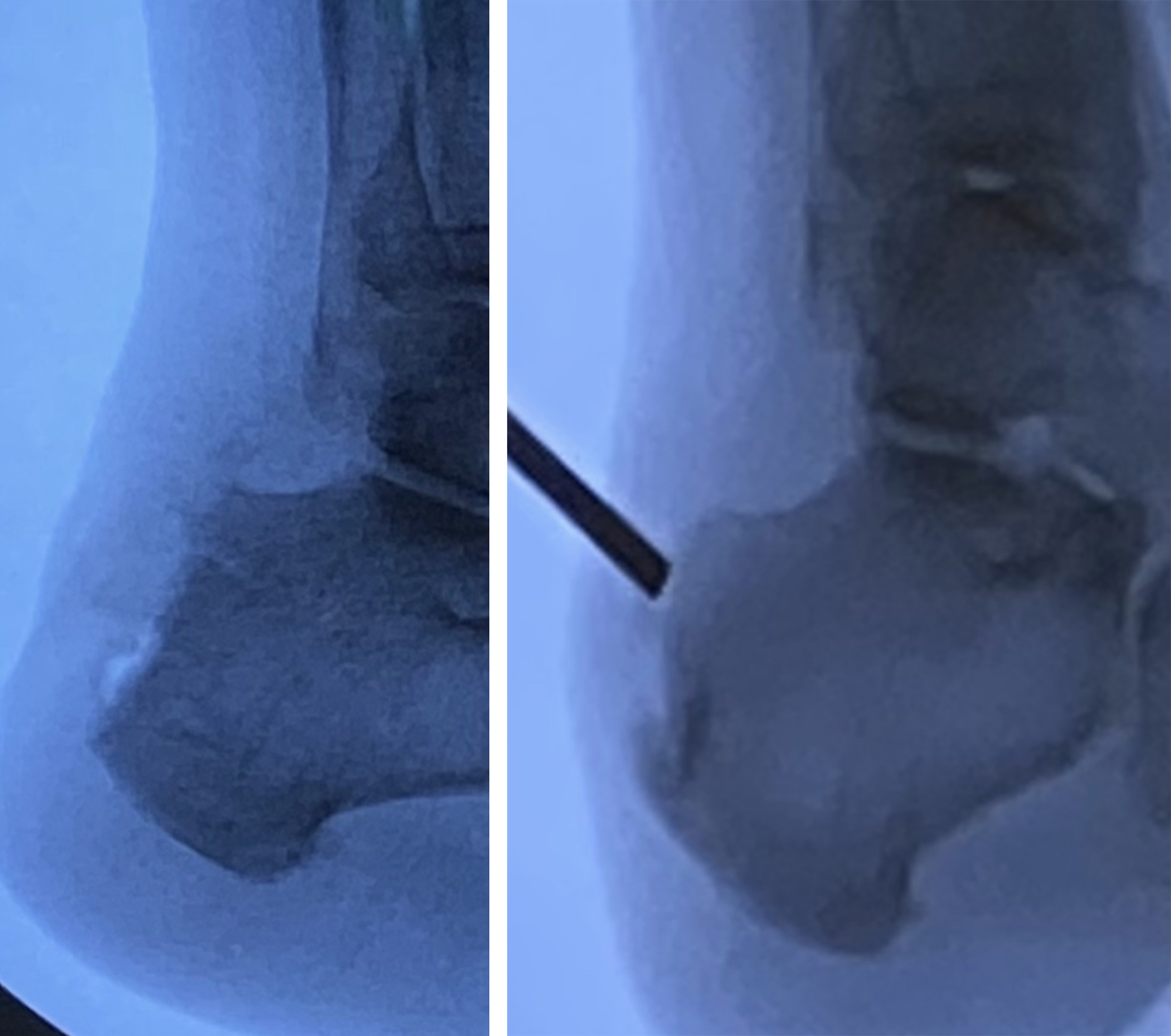The Achilles tendon, named after the Greek god Achilles, known for his superior strength. The Achilles tendon is the largest tendon in the body with some of the worst blood flow. The vessels that supply the tendon are in a thin layer called the paratenon, and if damaged can cause chronic pain. The tendon often responds well in the office to shockwave therapy, class iv laser, prp or bone marrow injections, but if those fail surgery is merited. Dr. Barnett will go over some new innovations that has truly changed how people recover and heal long term.

Acute Tears Using Minimal Invasive (MIS)
Traditional Open Surgery
Literature has supported repairing an Achilles that has fully torn, or partially more than 50%. The traditional surgeries involved large incisions, bulky suture and cadaveric grafting, and slow healing times. Typical post op recovery is 2-8 weeks non weight bearing, and 6 months to return to normal activity and over a year for high impact.
Minimal Invasive
With advanced techniques and training, Dr. Barnett can utilize small incisions with amazing results. The technique involves a small, maybe ½ inch incision in the skin where the tendon has torn. Instrumentation to grab the tendon, stitch tendon, and pull tendon down is all done under the skin and through one small incision. Once the tendon has been secured, an Xray in surgery is used to anchor the suture into the heel bone.
The suture pulls the tendon in place and anchors hold the durable suture in place. The result is 1 small calf incision and 2 small incisions by the back of the heel.
Weight bearing generally started the end of the first week and return to normal supportive shoes at 4-6 weeks (With use of Tayco Brace). The risk of infection, dehiscence, and retearing is lowered due to the minimal soft tissue damage and strong construct. Running is allowed at a few months.
Something to note-Since the Achilles is the largest tendon with the worst blood flow, even MIS takes time to get back to high impact but return to daily life is cut in half or more by choosing the MIS approach. (This is the technique Aaron Rogers had after his Achilles ruptured).
Haglund’s Deformity Chronic Tendon Damage
Some people can develop scar tissue in repeatedly injured Achilles caused chronic heel pain. The pain is worse in the morning or after standing and does not seem to go away even with ice and rest. The tendon begins to pull on the heel bone and form a bone spur inside the tendon where it attaches.
Traditional Open Surgery
In order to access and repair the damaged tendon and bone spur the tendon has to be removed, the bone cleaned up, and the tendon reattached. This was a very challenging and slow process to heal. The patient generally is non-weight for 4-8 weeks followed by 1-3 months in a boot and aggressive physical therapy. Because the back of the heel is very thin, wound issues always seem to be an issue. Some wounds I would treat for two and three months after the initial surgery. Wounds and infections really affected the quality of life for people and made the recovery seem like an eternity.

MIS Haglund’s Resection
Dr Barnett is one of only a handful of doctors in the area proficient in mis surgery for Haglund’s. The surgery involves 4 small incisions less than ¼ inch each. The tendon can be repaired, bone marrow aspirate injected into tendon, and a unique anchor system can attach the tendon back to bone with very little trauma. This technique allows for very little swelling, minimal pain, and the ability to walk the first week. The incisions heal very easily and return to normal life is in weeks not months.
Whether you are looking for a quick fix, conservative, or surgery for an ailing tendon issue, Dr. Barnett will explain the ins and outs of each option and the benefits and risks of each. The more informed a patient can be the better prepared they will be to face Achilles tendon recovery.



